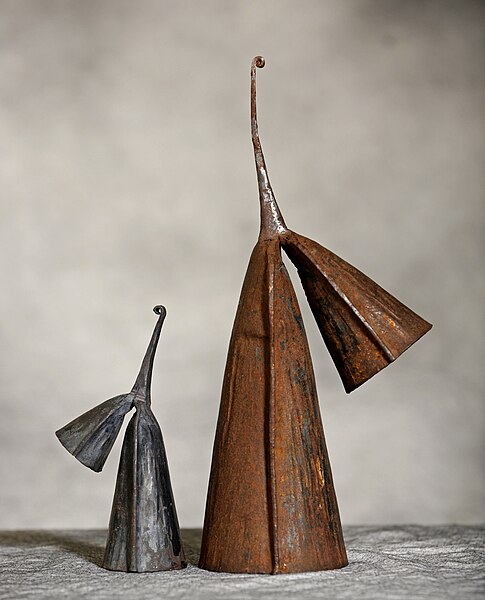A bell pattern is a rhythmic pattern of striking a hand-held bell or other instrument of the idiophone family, to make it emit a sound at desired intervals. It is often a key pattern, in most cases it is a metal bell, such as an agogô, gankoqui, or cowbell, or a hollowed piece of wood, or wooden claves. In band music, bell patterns are also played on the metal shell of the timbales, and drum kit cymbals.
Ghanaian iron gankoqui bells.
Axatse
Cuban-style mountable cowbells.
Standard bell pattern variations Play topⓘ and Play bottomⓘ
The clave is a rhythmic pattern used as a tool for temporal organization in Brazilian and Cuban music. In Spanish, clave literally means key, clef, code, or keystone. It is present in a variety of genres such as Abakuá music, rumba, conga, son, mambo, salsa, songo, timba and Afro-Cuban jazz. The five-stroke clave pattern represents the structural core of many Cuban rhythms. The study of rhythmic methodology, especially in the context of Afro-Cuban music, and how it influences the mood of a piece
is known as clave theory.
Playing a pair of claves
3–2 piano guajeo: clave motif, written in cut-time (Playⓘ)
2–3 piano guajeo: clave motif, written in cut-time (Playⓘ)
3–2 guajeo: offbeat/onbeat motif, written in cut-time (Playⓘ)








